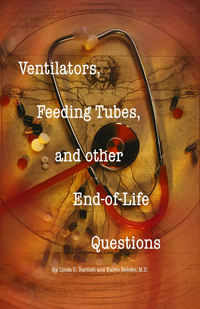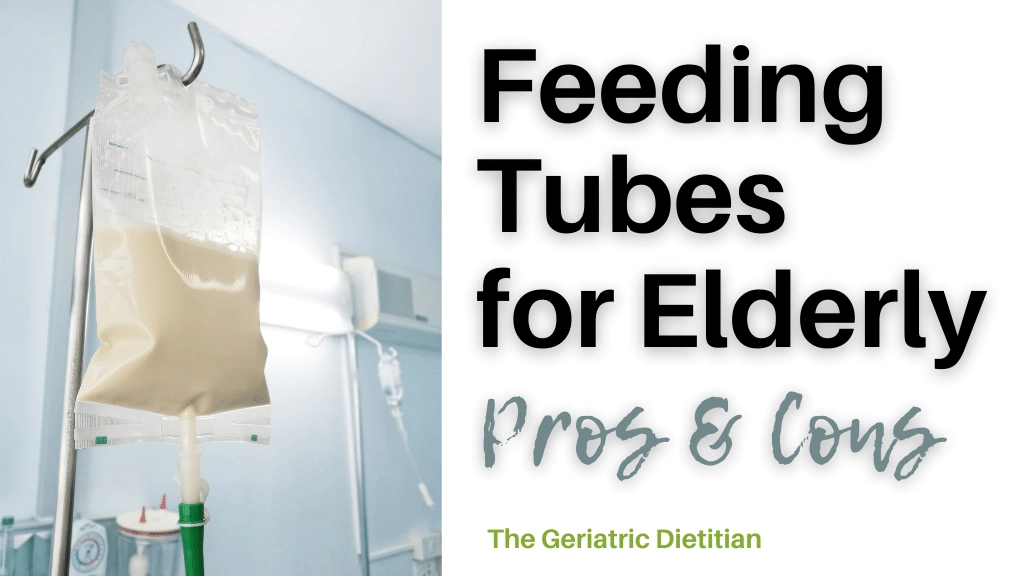no feeding tube life expectancy
Physicians declined to answer questions regarding life expectancy for 64 patients. A feeding tube may allow life to be prolonged for decades in an otherwise healthy individual.

Intubation Means Life Support Saskhealthauthority
Published Studies on PEG Tubes with More Than 50 Patients.

. A jejunostomy tube is similar to a PEG tube but its tip lies inside the small intestine thus bypassing the stomach. As a postive note his lung function remains. Day 1 The process begins on the day the tube is removed.
Some people stay on one for life. Refusing a feeding tube also means the patient will not receive hydration. When is it inappropriate to use a feeding tube in an elderly person.
1 PEG tube feeding does not help prevent skin breakdown or pressure ulcers. Medical Complications of PEGs. It is a small flexible tube about ¼ in diameter that is an alternative route for nourishment and hydration.
Patients who are not conscious will not feel any. Im sure hes afraid to swallow as he chokes easily. 1259-11 In patients with dementia PEG tube feeding rarely contributes to better nutritional status or longer life nor does it minimize suffering or improve functional status.
Median survival times were longer for dementia patients with tube feeding 695 days compared With those without tube feeding 75 days P 0001 About 75 of the dementia patients with tube feeding survived more than a year and about 50 of them survived more than two years. TammieLee May 2014. Having a peg will not affect your life expectancy.
While food and water are essential to life there is considerable controversy in the medical literature as to how much artificial nutrition and hydration help at the time of death. In fact the possible complications from this feeding method may hasten the death of a cognitively-impaired individual. Craft and Honor a Compassionate End-of-Life Care Plan Ideally decisions about care near the end of life are made while everyone is healthy and able to speak their minds.
Use and Care Tubes can deliver food in different ways. To make matters worse a patient with dementia is unlikely to understand why a. The lifespan of the peg feeding tube is about 1 year although the tube may wear out sooner.
As shown in Table 1 the mortality rate for these patients is high. The reason for this is to spare patients with a grave prognosis or limited need for tube feedings the expense and risk of an unnecessarily invasive procedure. Patients who have had their feeding tubes removed are expected to live just over 10 days.
A person can live for days months or even years if they are fed through a tube. This tube can remain in place for up to two weeks when it must be removed or replaced with a permanent tube. A person can survive a life time on a feeding tube death wont come from a feeding tube but from illness or comorbidities that required a feeding tube in the first place.
Id like to keep him around for a long long time and refusing a feeding tube sounds like a life-ending decision to me. Physicians need not fear the legal consequences of discontinuing life-sustaining treatment if an appropriate decision-making process has been followed1 An adult patient who has decision-making capacity and is appropriately informed has the right to forego any forms of medical therapy including life-sustaining therapy such as PEG tube feeding2. Nothing is perfect but for the most part peg issues are frustrating and annoying more than anything else.
Ying says feeding tubes are often started with the intention of prolonging a persons life. An infection is treated with antibiotics or. Refusing a feeding tube also means the patient will not receive hydration.
In this population-based study we found that children with NI had relatively high mortality after primary feeding tube placement 126 in 2 years and 242 in 5 years. James Park in his manuscript Voluntary Death by Dehydration reports that within a week the mind becomes unconscious followed by the heart and lungs ceasing to work 2. In fact removing terris feeding tube sets a scary precedent and.
Rates of acute health care use were stable in the 2 years after tube placement. Tube feeding is used when a person cannot eat or drink enough to keep alive or when swallowing food or liquids is unsafe. Those with a life expectancy of less than 30 days or who will only require short-term feeding should be fed via a nose or nasogastric feeding tube.
Mortality was near 502 Although feeding tubes have been advocated to prolong life limit aspiration pneumonia improve function and maintain comfort studies do not document these. Yet there is no evidence to show they help with survival she says. 16 25 40 Although informative these studies cannot provide survival estimates for those who might not choose PEG feedings.
The experts largely agree that PEG tube feeding is of little benefit for most patients with a limited life span or with dementia. For the 216 remaining patients life expectancy without the feeding tube was a median of 12 months and it increased to an anticipated life expectancy of a median of 13 years with the feeding tube in. Jejunostomy tube J tube or PEJ tube.
For the record hes lost about 10-15 pounds in the last month and his fluoroscopy shows that hes aspirating liquids. Research however does not demonstrate increased life expectancy for people who have dementia and a feeding tube compared with those without a tube. For example studies show that dementia patients who are tube-fed have no different life expectancy than those who are slow hand-fed.
Dehydration leads to a relatively quick demise. However even when life support is provided people might die. As you have noticed some people with pegs have conditions that are life limiting but that isnt due to the peg.
Those with a life expectancy of less than 30 days or who will only require short-term feeding should be fed via a nose or nasogastric feeding tube. 2 to 27 are dead within 30 days and approximately 50 or more within 1 year. Nov 9 2020 444 AM.
Some people choose tube feedings for a loved one because theyre not ready to let that person go yet or they feel like theyd be giving up on their loved one. A feeding tube can remain in place as long as you need it. Most people will not live more than seven days when fluid is denied.

The Cost Of Dying Simple Act Of Feeding Poses Painful Choices The Mercury News

Ventilators Feeding Tubes And Other End Of Life Questions Lutherans For Life

Arjuna Heart Palpitations Benefits Herbal Chf Diuretics For Dogs Water Retention Dog Treatment Water Pills

Feeding Tubes For The Elderly Pros And Cons

Artificial Nutrition And Hydration In The Last Week Of Life In Cancer Patients A Systematic Literature Review Of Practices And Effects Annals Of Oncology

Why Hospice Care Would Choose To Stop Feeding A Patient

Appropriateness Of End Of Life Care In People Dying From Copd Applying Quality Indicators On Linked Administrative Databases Journal Of Pain And Symptom Management

Does Cerebral Palsy Affect Life Span Cerebral Palsy Faqs

How Doctors Can Approach End Of Life Conversations Life Counseling End Of Life Life

Feeding Tubes For Elderly Pros And Cons The Geriatric Dietitian

Why Doctors Predict Life Expectancy Ohio State Medical Center

Als Average The Cure Life Sentences

Rich Roll Finding Your Ultra Youtube Finding Yourself Vegan Athletes Health And Wellness

What S Extraordinary Catholic Wisdom On End Of Life Care America Magazine

Give Them Comfort Controlling Copd Symptoms At End Of Life

The Big Three Cpr Mechanical Ventilation And Feeding Tubes

Ask The Geriatrician Tube Feeding And Alternatives For Older Adults With Advanced Dementia Healthinaging Org

